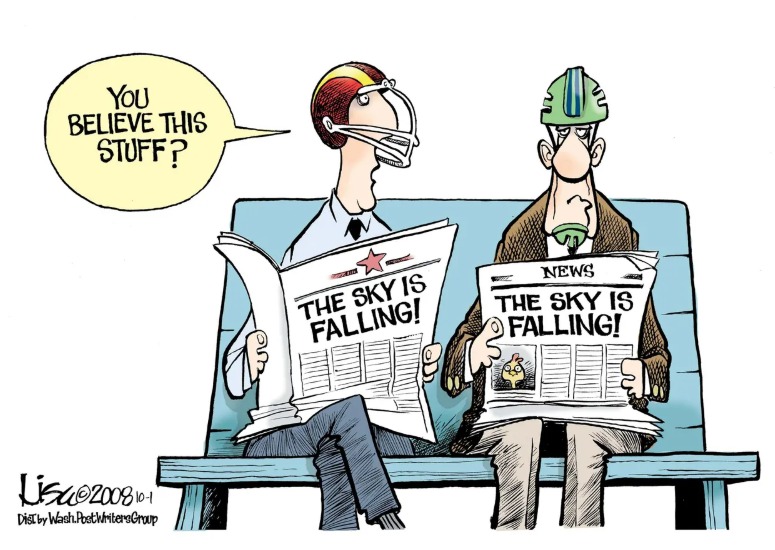- 0243394034
- info@centralcoastseo.com.au
- Google 1st Pages Guaranteed in Writing.
Manage News Archives | Strategies for Updating, Archiving, and Removing Content

Manage News Archives | Strategies for Updating, Archiving, and Removing Content
Over the years, news websites build up a huge collection of articles. While each one plays a part in documenting past events, not all of them stay important or useful forever. Smartly handling this older content is important for keeping a website’s SEO strong and making sure visitors have a good experience.
Understand the Impact of Outdated Content
Old articles can hurt a website’s performance in a few ways. They might have information that’s no longer correct, links that don’t work anymore, or talk about things that aren’t important now. This kind of content can make the whole site seem less reliable, causing people to trust it less and spend less time there. Plus, search engines like Google Favor new and relevant information, so having outdated articles can lower your website’s position in search results.
But just deleting old stuff isn’t always the best answer. Some older articles might still get traffic or have valuable links pointing to them from other websites. Getting rid of these without thinking it through could mean losing some of your website’s SEO strength. So, it’s important to handle this carefully.
Establishing Criteria for Content Evaluation
Effectively steering a news website through the ever-flowing currents of information demands well-defined evaluation criteria for its content. This involves a nuanced assessment of each article’s ongoing relevance in a dynamic world, its current performance in engaging readers and attracting links, and its enduring contribution to the site’s overall authority and credibility. Here’s a deeper look at these criteria:
- The Evolving Lifespan of Content – The digital landscape recognises that not all content is created equal in its longevity.
- The Ephemeral Nature of Timely News – Reports detailing specific breaking events or immediate updates often possess a fleeting relevance. Like yesterday’s headlines, their immediate impact diminishes as the news cycle progresses. While crucial in their moment, their long-term SEO value may wane.
- The Enduring Power of Evergreen Content – Conversely, articles crafted to provide timeless information, offer fundamental insights, or explore perennially interesting topics possess a remarkable staying power. These pieces can continue to attract traffic and build authority over extended periods, acting as cornerstones of a website’s content library.
- Historical Significance as Enduring Value – Beyond immediate traffic, certain articles hold a profound historical significance. They serve as digital records of pivotal moments, document significant societal shifts, or offer crucial context for understanding the past. Even if these pieces no longer generate high daily page views, their presence can significantly enhance a news organization’s credibility, demonstrating a commitment to comprehensive reporting and establishing valuable archival resources for researchers and the public.
- Performance Metrics as Indicators of Current Health – Data provides invaluable insights into an article’s present-day contribution. Analysing key performance metrics paints a picture of its current value:
- Page Views indicates the level of ongoing interest and traffic an article attracts. Consistently low views may signal declining relevance.
- Bounce Rates reflects how engaging the content is for visitors. High bounce rates on older content might suggest outdated information or a poor user experience.
- Backlink Profiles reveals the number and quality of other websites linking to the article. Valuable backlinks contribute significantly to SEO authority, suggesting the content still holds value for others. Content with consistently low engagement and no inbound links may be prime candidates for more decisive action.
- The Calculus of Maintenance Requirements – The practicalities of upkeep also play a crucial role in content management. Consider the resources required to keep content updated and accurate. If an article demands frequent and significant revisions to remain relevant – perhaps due to changing facts, broken links, or outdated references – without yielding substantial ongoing returns in traffic or authority, it may be more efficient to consider archiving or even removing it to better allocate resources towards higher-impact content.
Implementing a Scoring System
To make smart and fair choices about our content, a structured scoring system can be incredibly helpful. Think of it like creating a scorecard where we assign points to different qualities of each article. This lets us look at everything objectively, rather than just relying on gut feelings.
Here’s an example of how we might set up such a scorecard:
- Historical Significance – Assign a score from 0 to 30 points based on the article’s importance as a historical record or its contribution to understanding past events.
- User Engagement – Evaluate the article’s current engagement levels (e.g., page views, time on page, social shares) and assign a score from 0 to 25 points.
- SEO Performance – Assess the article’s SEO performance (e.g., keyword rankings, organic traffic, backlinks) and assign a score from 0 to 25 points.
- Maintenance Effort – Consider the resources and effort required to keep the article accurate and up to date, assigning a score from 0 to 20 points (lower scores for high effort).
Once we score all our articles using these criteria, we can set a cutoff point. Any article that scores below this number would then be flagged as something we should probably either remove from the site or combine with other, more relevant content. This way, we have a clear and consistent method for deciding what stays and what goes.
Strategies for Content Management
- Giving Content a Fresh Coat of Paint (Updating) – Sometimes, an old article just needs a little TLC to become valuable again. Think of it as dusting off a classic and adding some modern touches. If an article covers a topic that’s still relevant but has outdated facts, figures, or links, updating it with current information can bring it back to life. This is especially useful for those “evergreen” articles – the ones that provide timeless information but might have gotten a bit stale over time. Giving them a refresh can boost their SEO and make them useful to readers again.
- Putting Content in the History Books (Archiving) – For articles that might not be relevant for everyday readers anymore but are still important for historical reasons, archiving is a good move. It’s like putting them in the website’s library. Archived content should still be accessible for people who are looking for it and for search engines to find, so you don’t lose the historical record of your site without making your current website feel cluttered with old news.
- Saying Goodbye (Removing) – When an article is not only old but also doesn’t offer any real value anymore, sometimes the best thing to do is to remove it. It’s like decluttering your attic. However, you can’t just delete it and forget about it. It’s important to set up proper redirects. This tells search engines (and anyone who might have a link to the old page) where the new, relevant content is. This helps you keep your SEO strong and avoids those frustrating “page not found” errors for your users.
Technical Considerations
- Setting Up Detours (Redirects) – When you decide to remove an old page, it’s like closing a road. To make sure people don’t end up at a dead end, you need to set up detours. These are called 301 redirects. They tell search engines and anyone who clicks on a link to the old page to automatically go to a new, relevant page on your site. This way, you don’t lose the “link juice” (the SEO value passed on by other websites linking to the old page) and you make sure users find what they’re looking for.
- Keeping the Site Map Updated – Think of your website’s XML sitemap as a map for search engines. It helps them understand all the pages on your site. When you add, remove, or update content, it’s important to update this map regularly. This makes sure search engines know about your current content and can index it properly, which helps with your SEO.
- Fixing the Inside Roads (Internal Linking) – Imagine your website as a city with lots of roads connecting different places. If you close down an old shop (remove a page), you need to make sure none of the road signs (internal links) are still pointing to it. Reviewing and adjusting your internal links makes sure users don’t end up clicking on links that go nowhere. Keeping a clear and logical network of internal links also helps users navigate your site better and improves your overall SEO.
Establishing a Review Schedule
Think of managing your website’s content like tending a garden – it’s not a one-time task, but something you need to do regularly to keep it healthy and thriving. Implementing a regular review schedule ensures your site stays fresh, relevant, and continues to be seen as a trusted source of information.
Here’s how you can schedule those check-ups:
- Monthly Quick Checks – Every month, take a look at the content you’ve recently published. See if it’s still relevant and how it’s performing. This helps you catch any immediate issues or identify early successes.
- Quarterly Deep Dives – Every three months, do a more thorough evaluation of your older content. This is when you’d bring out your scoring system and really assess each article’s historical value, user engagement, SEO performance, and how much effort it takes to maintain. This helps you decide what to update, archive, or remove.
- Annual Big Picture Review- Once a year, take a step back and look at your entire website’s content strategy. Think about how user needs might have changed and if your content still aligns with the latest SEO best practices. This is your chance to make bigger adjustments and ensure your content is set up for long-term success.
Conclusion
Effectively managing a news website’s content is vital for maintaining SEO performance and providing value to readers. By establishing clear evaluation criteria, implementing structured strategies, and maintaining regular review schedules, news organizations can ensure their archives remain assets rather than liabilities. This approach not only preserves the site’s historical integrity but also enhances its relevance in an ever-evolving digital landscape.


















